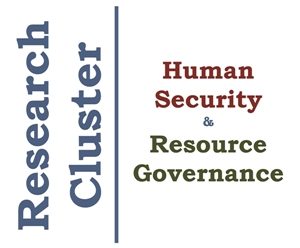Scott Lucas, University of Birmingham
Washington and Tehran are locked in a political, economic, and propagandist confrontation – and there is no apparent way out.
One route to de-escalation could be direct talks between the US and Iran, either on a bilateral basis or as part of multilateral discussions.
When US President Donald Trump stepped back from launching airstrikes inside Iran on June 20, he said he was willing to talk and included an offer of phone numbers to Iran’s leaders. But a war of words followed after Trump imposed new sanctions on Iran, including on its supreme leader, Ayatollah Ali Khamenei.
Meanwhile, his administration – which withdrew from a 2015 Iran nuclear deal in May 2018 and imposed comprehensive sanctions in November – has based the offer of talks on an effective surrender by the Islamic Republic of its nuclear programme, of its policy and operations in the Middle East, and of its political and economic autonomy.
In early June, US Secretary of State Mike Pompeo said the US was ready for “unconditional” discussions with Iran. But he actually set 12 points as prerequisites for any talks: including Tehran giving up all uranium enrichment, for civil programmes, halting missile development, breaking ties with groups in the Middle East from Lebanon’s Hezbollah to Palestine’s Hamas and Islamic Jihad to Iraqi militias, ending its support of Yemen’s Houthi insurgency, and withdrawing its troops from Syria.
Unsurprisingly, Khamenei is not keen on that offer. In May, before the attacks on two tankers in the Gulf of Oman and the downing of a US drone, he said: “Negotiating with the present American government is doubly poisonous … They are not decent humans, they don’t stand by anything.”
With Khamenei and Iran’s Revolutionary Guards striking firm poses declaring the Islamic Republic’s strength against US weakness, Iran’s “centrist” president, Hassan Rouhani, has had to follow suit, proclaiming in early June that Iran had “forced the enemies to retreat step by step”.
So has Iran’s foreign minister, Mohammad Javad Zarif, the Iranian lead negotiator in the 2015 nuclear agreement. He tweeted at the start of June about American sanctions: “This is Donald Trump’s ‘economic war’. And war and talks – with or without preconditions – don’t go together.”
Rejecting mediation
A second route is indirect talks, such as contacts via Oman in 2012 to set up negotiations between Iran and the 5+1 powers who brokered the 2015 Iran deal – the US, UK, France, Germany, China, and Russia.
In May, there was flutter about a reprisal of these talks, as Iran’s deputy foreign minister met the Omani Sultan and Japanese prime minister, Shinzo Abe, set up a visit to Tehran after a Tokyo summit with Trump.
But on June 13, just before news about the attack on the two tankers in the Gulf of Oman broke, Khamenei slammed the door shut. When Abe said he was carrying a message from Trump, Khamenei replied: “I do not consider Trump as a person worth exchanging any message with and I have no answer for him, nor will I respond to him in the future.”
So what of the third route, bypassing the US and its hardliners through Iranian links with other countries?
Facing the US withdrawal from the nuclear deal and Americans sanctions appearing to seek regime change, the European Union spent months developing a special purpose vehicle for non-dollar trade in Iranian oil and other commodities and goods. In early 2019, the EU launched a limited version of the mechanism, known as INSTEX.
But Iran turned down the escape from economic isolation. Officials, undoubtedly guided by the supreme leader’s office, cited “humiliating conditions”.
Those conditions? The EU’s concern over Iran’s continued missile development and launches, activity in the Middle East, and involvement in alleged bomb and assassination plots in Europe.
On June 10, three days before rejecting Japanese mediation, the Iranians did the same with German foreign minister, Heiko Maas. Even before Maas left Tehran, the foreign ministry pronounced: “What the Europeans need to do and what they have done so far have failed to win our satisfaction.”
Khamenei had issued his verdict: he – and 75m Iranians – would endure a crippled economy rather than making any apparent concession over Tehran’s military and political approach.
Hardliners to the left of me, jokers to the right
De-escalation requires a willingness to soften a hardline position. At the highest levels of the Iran regime, there is no such desire.
In September 2013, Khamenei acceded to nuclear talks because Rouhani presented him with a dossier about how bad Iran’s economic crisis would become if discussions were not pursued. This time, Khamenei has blocked the path back to discussions, and Rouhani is effectively sidelined. In his place are revolutionary guards who appear to be willing to carry out “pinprick” operations – maybe an attack on tankers, definitely firing on a drone – to push against US sanctions and military capabilities.
But in Tehran, the hardline comes with consistency. In the Trump administration, it comes with unpredictability.
With Trump shifting between a tough-guy pose and his desire for a photo-op in Tehran, the US swings a fist but then leaves it dangling in mid-air.
With no route to de-escalation at the moment, the economic battle – and, as the administration was keen to point out in recent days, the cyber-battle – continues. And so war, which comes not through design but through posturing and escalation, remains on the table.
Scott Lucas, Professor of International Politics, University of Birmingham
This article is republished from The Conversation under a Creative Commons license. Read the original article.
